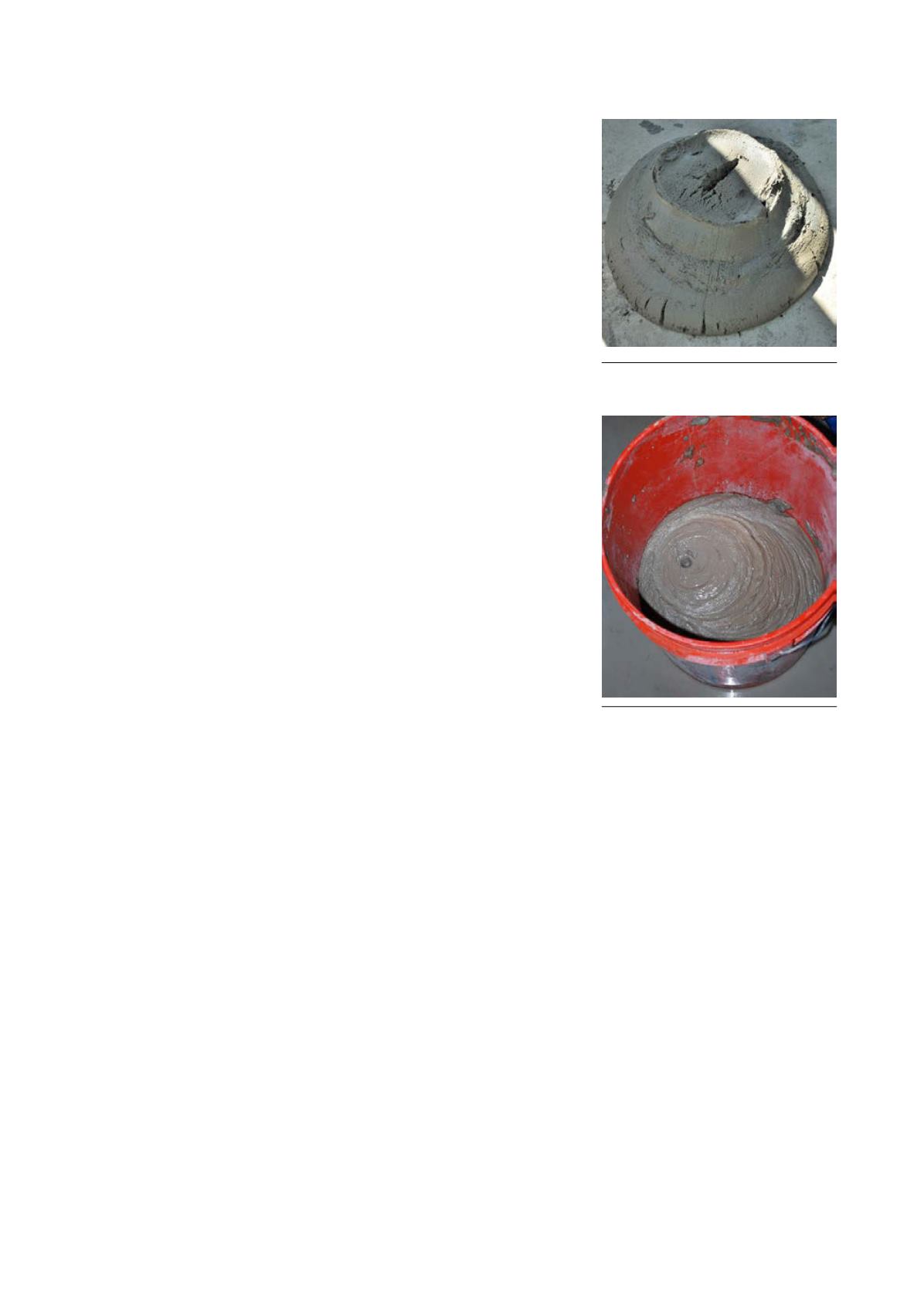
on what the plans are downstream for
the resulting mud. As we progress
from high rate to the paste thickener,
the underflow solids concentration
possible will increase. Here is where
the concept of yield stress comes into
play. In rheology, the yield stress is the
minimum amount of shear stress
required to initiate and sustain flow.
The higher the underflow solids
concentration, the higher the yield
stress is. Mine planners can best
determine the thickening process by
starting at the end of the system and
working backwards. Answers to the
questions regarding how the tailings
are to be stored, placed, transported
and produced are key to honing in on
the thickener design.
High rate thickeners
High rate thickeners are used to
provide lower yield stress muds. These
are muds that can be easily pumped
and flow out over relatively large areas
under gravity conditions alone. They
are by far the most commonly used
thickener in the industry today and
provide operations with a relatively
inexpensive way to recover water and
transport thickened tailings to an
impoundment. Water and solids will
further segregate in the impoundment
area, which needs to be dealt with by
returning to the process plant,
evaporation or discharge.
The high rate thickener, whether it
sits flat on the ground or is elevated,
collects mud in a shallow cone,
generally between 9° and 12°. The side
walls for these units are the lowest for
the three styles of thickeners and offer
the shortest residence time for the mud
to compact.
High density thickeners
High density thickeners are used when
producers need a slightly higher solids
concentration or mud yield stress. The
thickeners are sized to give longer
mud residence times to allow for
further compaction, and the rake
drives and supporting structures must
be designed to deal with a higher yield
stress mud.
Both the high rate and high density
thickeners are generally supplied with
rake lifting mechanisms to pull the
rakes up out of the mud, should a high
torque condition occur. The torque is
constantly monitored and, as it
decreases due to higher pump out
rates or reduced inflow of mud, the
rakes are indexed back down to their
lowest position.
Paste thickeners
Paste thickeners offer the operator the
ability to produce the highest
underflow concentrations and yield
stress muds possible, with gravity
settling alone. These tanks typically
have aspect ratios (height:diameter) of
1:1 to 1.5:1 and steep underflow cones
ranging from 25° to 60°. The principal
design consideration for a paste
thickener is the mud residence time.
Paste is a term used to describe a mud
from which there is little to no further
segregation of free water from the
solids. To further enhance the
formation of the paste, rakes are often
equipped with vertical rods, or angles,
that protrude upward in the tank.
These ‘pickets’ cut channels through
the mud, creating passages for trapped
water to be liberated from the mud as
it compacts.
Due to the high yield stress of the
muds, paste thickeners must often be
equipped with special pumping
arrangements for mud removal and
transport. Positive displacement
pumps such as piston or piston
diaphragm pumps are often used.
However, many mineral‑based muds
will exhibit a viscosity characteristic
known as rheomalaxis, which is the
irreversible thinning of slurry with
time as it is subjected to shear. In such
cases, the underflow cone of a paste
thickener may consist of two process
pumps. One pump has the duty of
withdrawing sludges and pumping it
back into the cone via a ‘shear loop’,
which serves to reduce the yield stress
of the mud. The second pump is
employed to move the lower yield
stress mud from the thickener and
transport it towards the placement
area. Rheomalaxic muds can make
dealing with the paste less expensive,
as centrifugal pumps may be
employed and placement can make
better use of the area available for the
material to flow. Additionally, if the
placement of the low water content
mud is made in shallow ‘lifts’, drying
time for the mud can be greatly
reduced.
Higher yield stress muds:
worth the effort
Why would someone want to go
through the trouble of creating these
higher yield stress muds? There are
several reason why this would be
considered: higher recovery of water
and usefulness in mine backfill are
two. But a third reason that is
extremely beneficial to producers is the
stability of the mud once in place.
Higher yield stress muds pose lower
risk of impoundment failure.
The success of a thickening system
requires that a sound effort is made to
understand the tailings. This is done
by a number of suppliers through
detailed settling and viscosity analysis
Figure 3. Paste thickener underflow
–
a
mud with a yield stress of 450 Pascals.
Figure 4. Paste thickener underflow
–
a
mud with a yield stress of 110 Pascals.
June 2015
|
World Coal
|
77


